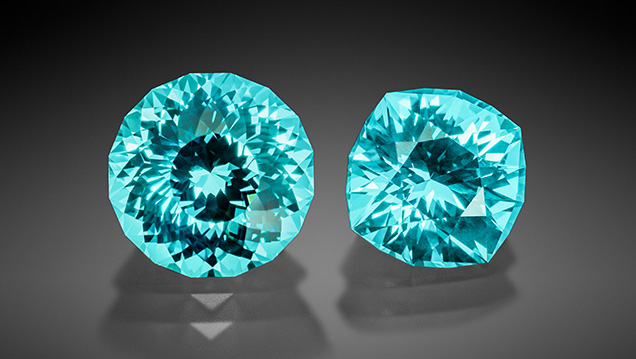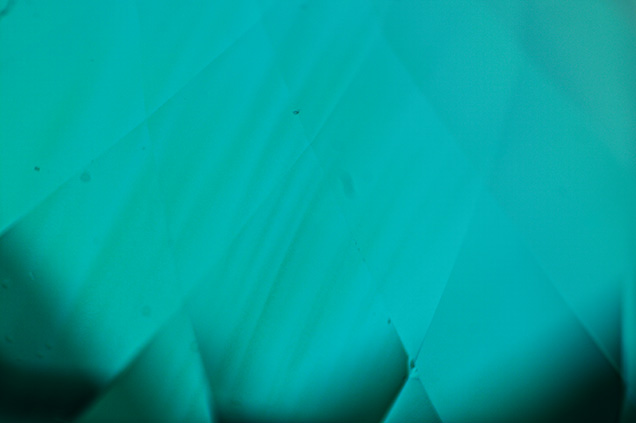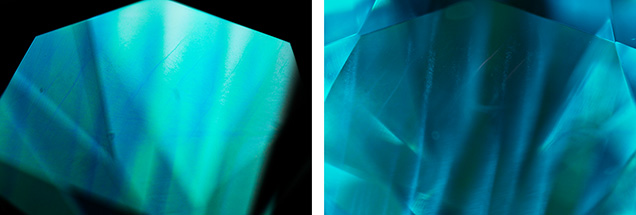Paraíba-Like Synthetic Sapphire

Recently GIA’s Carlsbad laboratory received for identification two gemstones weighing 7.78 and 4.90 ct (figure 1) that showed a neon green-blue to blue-green color similar to that of Paraíba tourmaline. Standard gemological testing yielded a refractive index of 1.76–1.77 and a specific gravity of 4.00, consistent with corundum. Microscopic examination revealed curved color banding (figure 2) when viewed with diffused light and immersed in methylene iodide. Plato lines were observed when examining the stones parallel to the optic axis using cross-polarized light. Curved color banding and Plato lines are the two most important pieces of evidence to separate natural from flame-fusion synthetic sapphire using standard gemological testing. Also observed were wavy, finely textured clouds associated with the blue color zones (figure 3). Pink emission caused by the presence of trace-element magnesium was seen only with fiber-optic light. This stone does not react to fluorescent light.


Trace-element chemistry measured by laser ablation–inductively coupled plasma–mass spectrometry (LA-ICP-MS) showed the presence of cobalt (105–158 ppmw, with detection limit at 0.652 ppmw), which is presumably responsible for the vibrant color, and magnesium (0.52–1.05 ppmw, with detection limit at 0.044 ppmw). Other trace elements such as Ni, Fe, Cr, and Ti were under the detection limits.
This is the first time GIA’s Carlsbad lab has examined flame-fusion synthetic sapphire with a color similar to Paraíba tourmaline.



